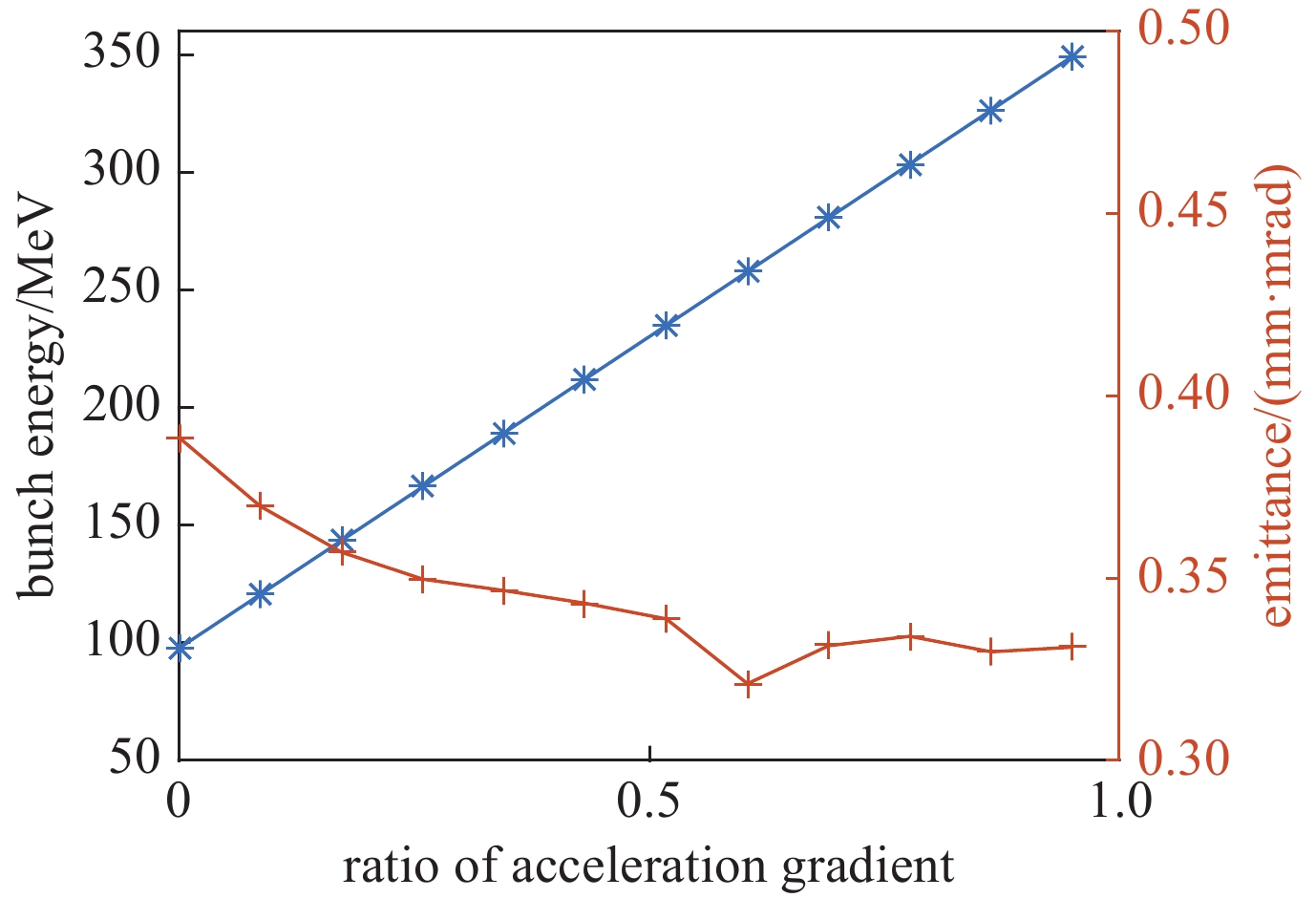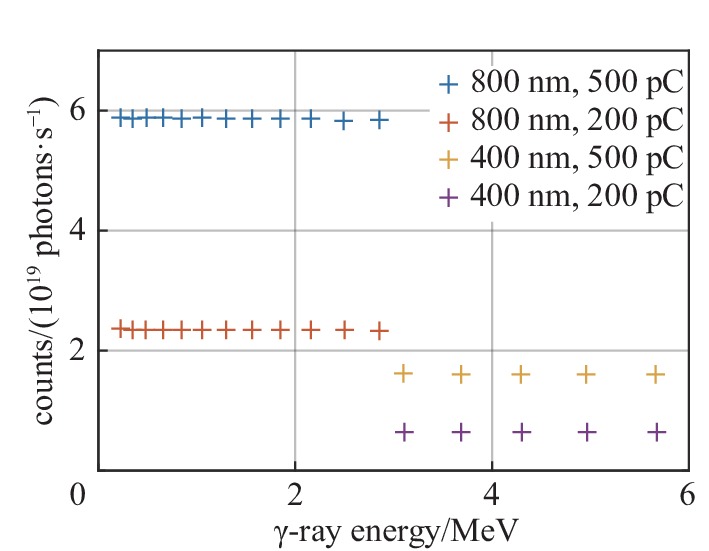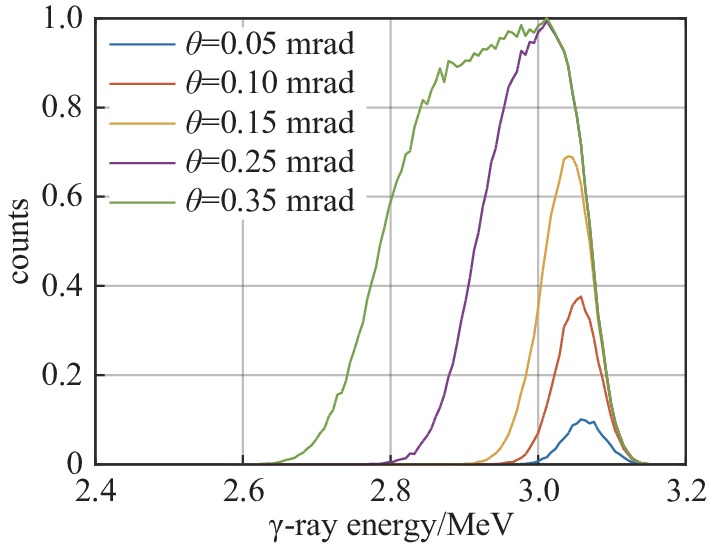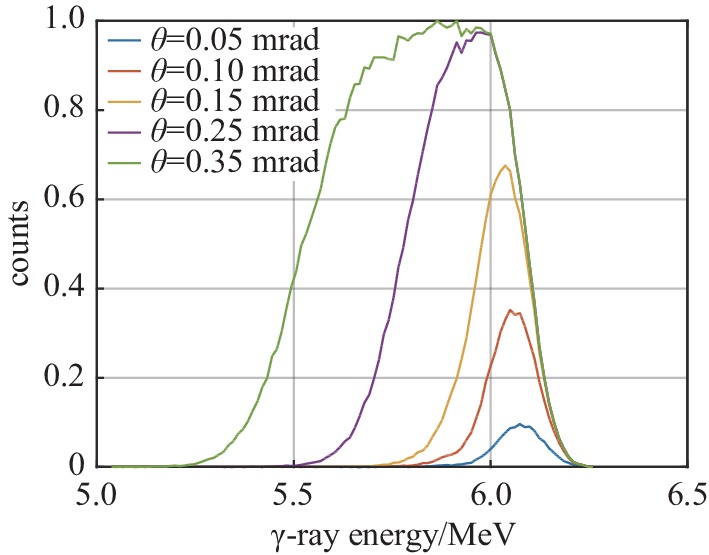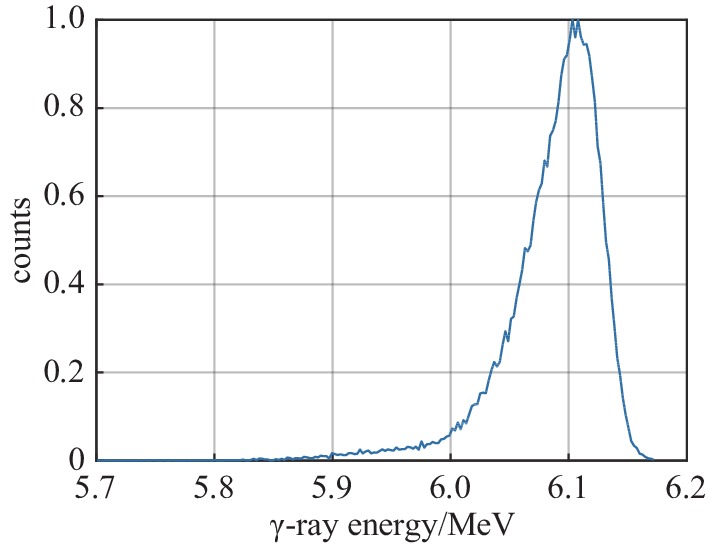A very compact inverse Compton scattering gamma-ray source
-
摘要: 基于高亮度电子束与超短强激光相互作用的逆康普顿散射X/γ射线源具有单色性好、能量可调、偏振可控等特点,在核安全及核安保领域具有广泛的应用前景。清华大学将研制国际上首套能量达MeV的紧凑准单能伽马源装置并开展包括先进辐射成像、基于核共振荧光的物质分析检测等应用工作。给出该光源设计方案,以及针对其关键性能指标进行的优化及光源最终性能指标。目前已完成光源的设计,正在进行部件的加工采购,预计将于2023年启动装置的安装调试工作,于2025年完成项目的调试和验收。Abstract: Inverse Compton scattering X/gamma-ray source can produce quasi-monochromatic, continuously tunable, high brightness, small spot size, polarization precisely controllable, and ultrashort (ps or sub-ps) X-ray pulse in the energy regime ranging from tens keV to several MeV or even higher. Recently a 0.2−4.8 MeV quasi-monochromatic compact gamma-ray source with high peak spectral density based on the inverse Compton scattering has been proposed in the Department of Engineering Physics, Tsinghua University. This type of compact gamma-ray source will be used for advanced X/gamma-ray imaging application based on the nuclear resonance fluorescence. In this paper, we will present the optimization of the design.
-
Key words:
- inverse Compton scattering /
- gamma-ray /
- electron beam /
- laser /
- nuclear resonance fluorescence
-
表 1 紧凑型准单能伽马源性能参数
Table 1. Performance parameters of VIGAS
parameter value γ ray photon energy continuously adjustable between 0.2~4.8 MeV relative bandwidth (RMS)/% <1.5 (after collimation) photon yield/(photons·s−1) >4.0×108@0.2~2.4 MeV;>1.0×108@2.4~4.8 MeV photon yield within 1.5% bandwidth >4.0×106@0.2~2.4 MeV; >1.0×106@2.4~4.8 MeV degree of polarization adjustable from linear to circular polarization 表 2 电子束流工作参数
Table 2. Parameters of electron beam in VIGAS
parameter value bunch energy/MeV 50~350 bunch charge/pC >200 normalized emittance/(mm·mrad) <0.6 bunch length/ps <2 energy spread/% <0.3 focused spot size/µm <20 repetition rate/Hz 10 表 3 激光工作参数
Table 3. Parameters of scattering laser in VIGAS
parameter value 800 nm 400 nm bandwidth/nm <15 <8 pulse energy/J >1.5 >0.8 pulse length (FWHM)/ps <10 focused spot size (RMS)/μm <10 表 4 多目标优化参数(第一列)、参数范围(第二列)及优化结果(第三、四列)
Table 4. Variable parameters in the optimization
parameters range optimization result 200 pC 500 pC laser duration/ps [4, 20] 7.27 7.09 laser beam size (RMS)/mm [0.2, 2] 0.2 0.33 launch phase/(°) [−20, 20] 5.4 3.0 gun solenoid strength/T [0.15, 0.35] 0.2024 0.2018 gun solenoid center/m [0.213 7, 0.213 7] 0.2137 0.2137 buncher field strength/(MV·m−1) [20, 50] 36.1 43.4 buncher center/m [0.73, 0.9] 0.9665 0.9665 buncher phase/(°) [−110, −80] −100 −98.5 linac center/m [1.5, 2] 2.402 2.402 linac solenoid center/m [1.5, 2] 1.6 1.6 linac solenoid strength/T [0, 0.2] 0.0804 0.109 表 5 200 pC标准模式和500 pC高电荷量模式下电子束参数
Table 5. Optimized beam parameters with 200 pC bunch charge and 500 pC bunch charge
normalized emittance/(μm·rad) bunch length (RMS)/mm bunch energy/MeV energy spread (RMS)/MeV bunch charge/pC 0.294 0.208 361.3 0.45 200 0.623 0.202 361.5 0.40 500 表 6 光阴极紫外驱动激光参数
Table 6. Parameters of the driving laser system
parameters value central wavelength/nm 267 repetition rate/Hz 10 pulse energy/μJ 2~500 pulse width (FWHM)/ps 5-10 rising and falling edge (10%~90%)/ps 1.0 beam size (RMS)/mm 0.2~2 energy jitter (RMS)/% <2.0 time jitter between RF and laser (RMS)/ps <0.1 表 7 联合参数扫描各参数抖动范围
Table 7. Parameter jitter range in the joint parameter sweep
parameters jitter range bunch charge/% $ \pm 2 $ laser duration/% $ \pm 2 $ laser beam size/% $ \pm 2 $ gun field strength/% $ \pm 0.1 $ gun phase $ \pm 0.5 $ buncher field strength/% $ \pm 0.1 $ buncher phase $ \pm 0.5 $ S band linac field strength/% $ \pm 0.1$ S band linac phase $ \pm 0.5 $ X band linac field strength/% $ \pm 0.1 $ X band linac phase $ \pm 1 $ scattering laser pulse energy/% $ \pm 2$ relative position between electron and laser beam/μm $ \pm 3 $ arrival time/ps $ \pm 0.25 $ -
[1] Curtis D C. Advancements in nuclear waste assay[D]. Birmingham: University of Birmingham, 2008. [2] Willman C. Applications of gamma ray spectroscopy of spent nuclear fuel for safeguards and encapsulation[D]. Uppsala: Uppsala University, 2006. [3] Metzger F R. Resonance fluorescence in nuclei[M]//Frisch O R. Progress in Nuclear Physics. New York: Pergamon Press, 1959: 54-88. [4] Warren G, Caggiano J, Peplowski P. Potential applications of nuclear resonance fluorescence[J]. AIP Conference Proceedings, 2009, 1194: 106-119. [5] Smith L E, Tobin S, Ehinger M, et al. AFCI safeguards enhancement study: technology development roadmap[R]. PNNL-18099, 2008. [6] Pruet J, McNabb D P, Hagmann C A, et al. Detecting clandestine material with nuclear resonance fluorescence[J]. Journal of Applied Physics, 2006, 99: 123102. doi: 10.1063/1.2202005 [7] Quiter B J, Laplace T, Ludewigt B A, et al. Nuclear resonance fluorescence in 240Pu[J]. Physical Review C, 2012, 86: 034307. doi: 10.1103/PhysRevC.86.034307 [8] Litvinenko V N, Burnham B, Emamian M, et al. Gamma-ray production in a storage ring free-electron laser[J]. Physical Review Letters, 1997, 78(24): 4569-4572. doi: 10.1103/PhysRevLett.78.4569 [9] Sprangle P, Ting A, Esarey E, et al. Tunable, short pulse hard X-rays from a compact laser synchrotron source[J]. Journal of Applied Physics, 1992, 72(11): 5032-5038. doi: 10.1063/1.352031 [10] Schoenlein R W, Leemans W P, Chin A H, et al. Femtosecond X-ray pulses at 0.4 Å generated by 90 Thomson scattering: a tool for probing the structural dynamics of materials[J]. Science, 1996, 274(5285): 236-238. doi: 10.1126/science.274.5285.236 [11] Ting A, Fischer R, Fisher A, et al. Observation of 20 eV X-ray generation in a proof-of-principle laser synchrotron source experiment[J]. Journal of Applied Physics, 1995, 78(1): 575-577. doi: 10.1063/1.360644 [12] Huang Z R, Ruth R D. Laser-electron storage ring[J]. Physical Review Letters, 1998, 80(5): 976-979. doi: 10.1103/PhysRevLett.80.976 [13] Variola A, Haissinski J, Loulergue A, et al. ThomX technical design report[R]. 2014. [14] Albert F, Anderson S G, Anderson G A, et al. Isotope-specific detection of low-density materials with laser-based monoenergetic gamma-rays[J]. Optics Letters, 2010, 35(3): 354-356. doi: 10.1364/OL.35.000354 [15] Korn G, LeGarrec B, Rus B. ELI extreme light infrastructure science and technology with ultra-intense lasers[C]//CLEO: Science and Innovations 2013. Optical Society of America, 2013: CTu2D. 7. [16] Wormser G, Barty C, Hajima R, et al. The white book of ELI nuclear physics Bucharest-Magurele, Romania[M]. 2010: 12. [17] 郭威, 顾嘉辉, 蔡翔舟, 等. 建立激光同步辐射源的初步探讨[J]. 强激光与粒子束, 2002, 14(5):787-791Guo Wei, Gu Jiahui, Cai Xiangzhou, et al. Preliminary discussion of laser synchrotron source construction[J]. High Power Laser and Particle Beams, 2002, 14(5): 787-791 [18] Luo Wen, Xu W, Pan Q Y, et al. A laser-Compton scattering prototype experiment at 100 MeV linac of Shanghai Institute of Applied Physics[J]. Review of Scientific Instruments, 2010, 81: 013304. doi: 10.1063/1.3282445 [19] Du Yingchao, Yan Lixin, Hua Jianfei, et al. Generation of first hard X-ray pulse at Tsinghua Thomson Scattering X-ray Source[J]. Review of Scientific Instruments, 2013, 84: 053301. doi: 10.1063/1.4803671 [20] Du Yingchao, Yan Lixin, Hua Jianfei, et al. Soft X-ray generation experiment at the Tsinghua Thomson scattering X-ray source[J]. Nuclear Instruments and Methods in Physics Research Section A: Accelerators, Spectrometers, Detectors and Associated Equipment, 2011, 637(1): S168-S171. [21] Tang Chuanxiang, Huang Wenhui, Li Renkai, et al. Tsinghua Thomson scattering X-ray source[J]. Nuclear Instruments and Methods in Physics Research Section A: Accelerators, Spectrometers, Detectors and Associated Equipment, 2009, 608(1): S70-S74. -




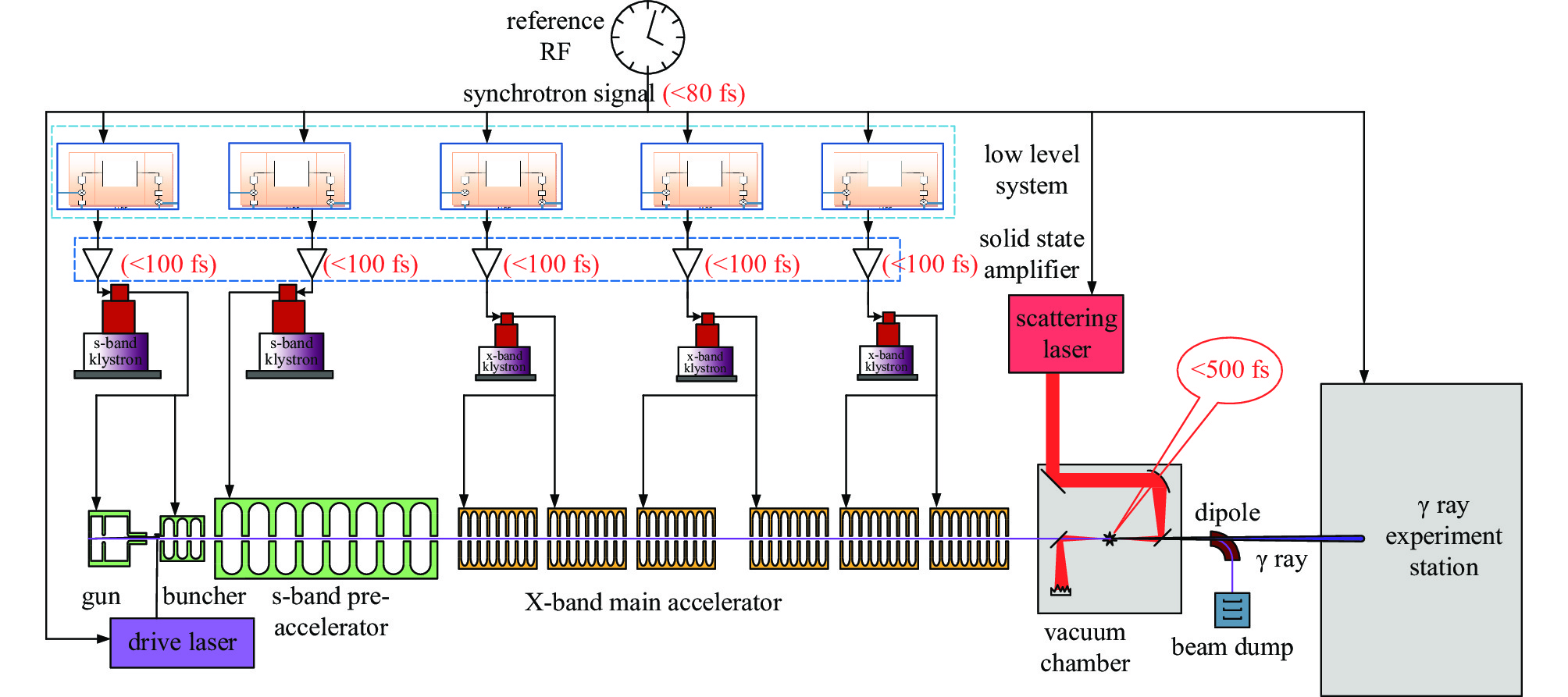
 下载:
下载:




